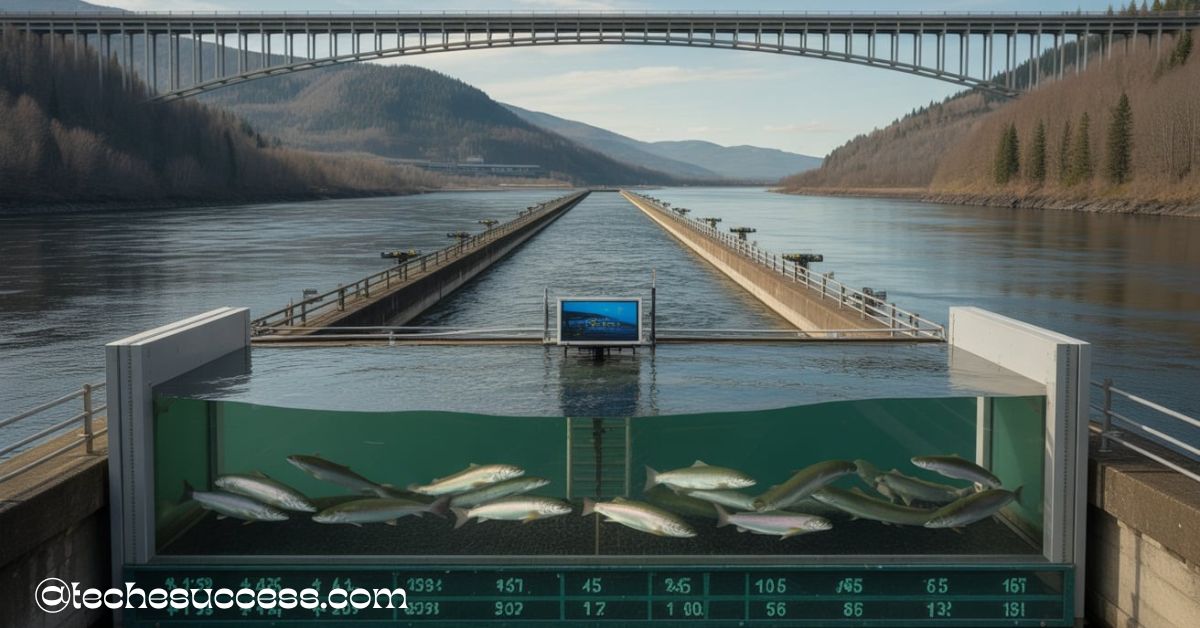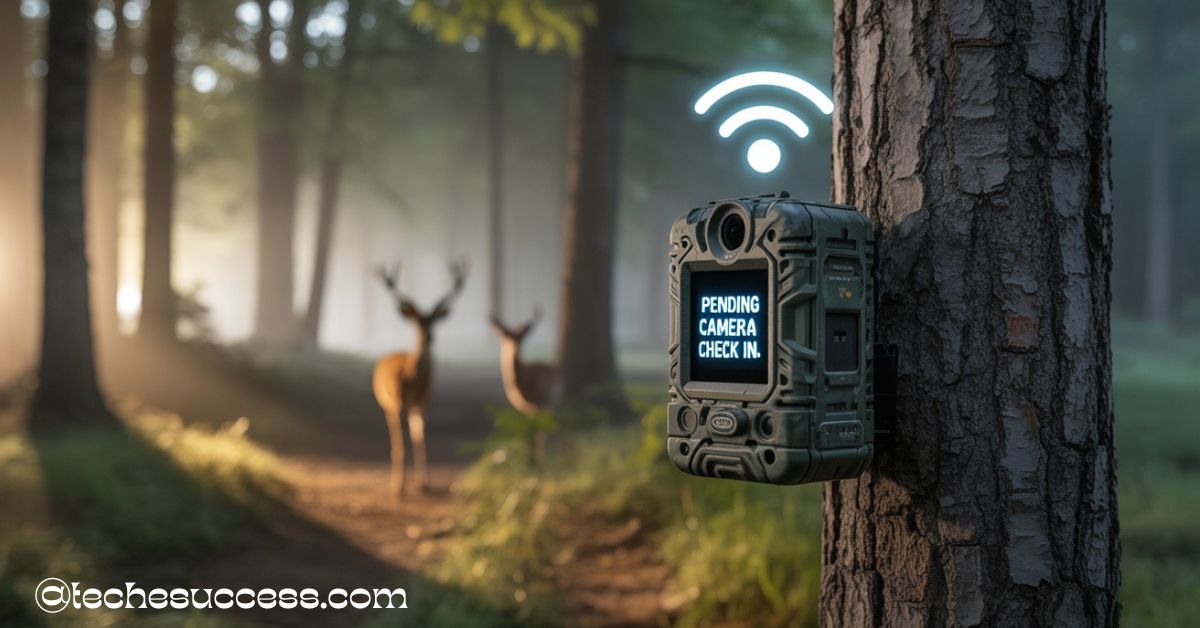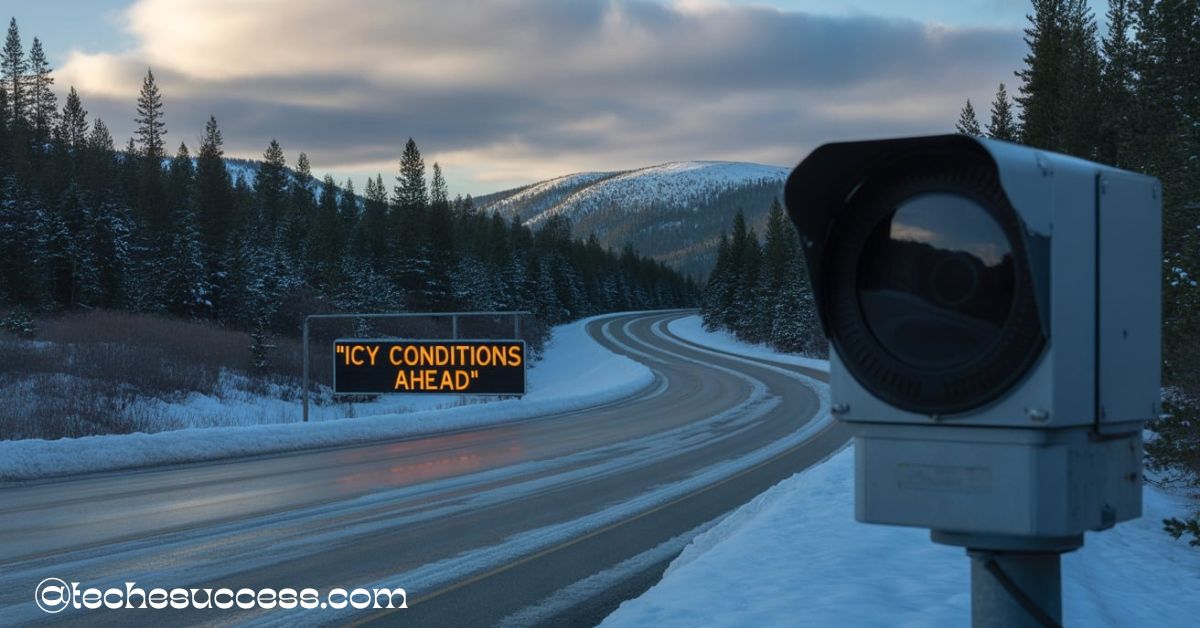The Bonneville Dam fish count camera provides a real-time view of migrating fish as they pass through the fish ladder. It helps track species like salmon and steelhead during seasonal runs. Stay informed with live updates and fish count data right from the dam.
“Stay tuned with us as we dive deeper into everything you need to know about the Bonneville Dam fish count camera — from live viewing access to fish migration insights and conservation impact.”
What Is the Bonneville Dam Fish Count Camera?
The Bonneville Dam fish count camera is a unique technological tool located at the Bonneville Dam on the Columbia River in the Pacific Northwest. It was installed to give scientists, conservationists, and the public a close-up view of fish passing through the dam’s fish ladders. These Bonneville Dam fish ladders help migrating fish bypass the dam as they swim upstream to spawn. Over the years, the camera feed has become popular for educational purposes and wildlife observation.
Historically, the camera streamed live video of fish such as salmon, steelhead, lamprey, and shad as they moved through the observation windows. This not only allowed researchers to monitor fish migration patterns but also engaged the public by offering a window into the lives of these vital aquatic species. While the live stream is currently offline due to technical challenges, the data collected continues to support critical research and conservation efforts.
The camera’s role goes beyond entertainment; it serves as a key component of the U.S. Army Corps of Engineers’ broader effort to preserve fish populations and manage waterway ecosystems responsibly. Understanding its function and impact helps us appreciate the relationship between infrastructure and environmental stewardship.
The History and Purpose of Bonneville Dam’s Fish Monitoring System
The Bonneville Dam, completed in 1938, was one of the first major dams on the Columbia River. From its inception, the dam presented a challenge to migratory fish like salmon and steelhead, which rely on free-flowing rivers to reach their spawning grounds. In response, engineers constructed Bonneville Dam fish ladders to assist fish passage, and over time, the need for accurate monitoring systems grew increasingly important.
The fish monitoring system, including the now-famous Bonneville Dam fish count camera, was developed to track and understand fish movement through these ladders. The original purpose was simple: ensure that fish passage was effective. Over the decades, however, it evolved into a sophisticated data-gathering operation used to influence fishery management policies, hatchery production decisions, and habitat restoration projects.
Scientists at the dam manually counted fish as they passed by observation windows. These counts, cross-referenced with video data, became essential for analyzing migration timing, population health, and overall ecosystem trends.
Beyond science, the monitoring system played an educational role. Local schools, wildlife enthusiasts, and tourists often visited Bonneville to witness fish migration firsthand. The dam became a unique blend of engineering marvel and biological observatory, embodying the intersection of human innovation and nature.
How the Fish Count Camera Works at Bonneville Dam
The Bonneville Dam fish count camera was mounted at key points near the Bonneville Dam fish ladder, particularly beside viewing windows where fish pass through. As fish swim upstream, they enter these windows, and the camera records their movement. Originally, the footage was streamed online, allowing anyone to watch the migration in real time as part of the Bonneville dam fish count camera live experience.
The camera was placed in a controlled environment to minimize light glare and water distortion. It was calibrated to capture clear images of fish passing through a narrow channel, making it easier to identify species, estimate size, and analyze behavior. Typically, the camera refreshed images every few seconds or streamed live video depending on system capacity.
In addition to video, the system often included timestamps and environmental data, such as water temperature and flow rates. These details provided important context for interpreting fish movement patterns. For research and documentation purposes, the video feed was archived and analyzed alongside manual counts conducted by trained observers.
Although currently offline due to cybersecurity and bandwidth concerns, the camera remains an essential part of a broader fish monitoring infrastructure. Its legacy endures in the vast archive of video data and in the many studies it has supported over the years.
Species Monitored by the Bonneville Fish Count Camera
The Bonneville Dam fish count camera captured a diverse range of migratory fish species, all of which are critical to the Columbia River ecosystem. Among the most commonly observed were various types of salmon, including Chinook, coho, and sockeye.
Chinook Salmon, often called king salmon, are the largest species seen on the camera. Their migration occurs in both spring and fall, with spring runs usually comprising larger individuals. Coho Salmon are slightly smaller and tend to migrate later in the season. Sockeye Salmon are notable for their bright red coloration and are usually seen during the summer.
Steelhead, a sea-run form of rainbow trout, also migrate through the Bonneville Dam. They can be difficult to distinguish from salmon but are known for their resilience and unique lifecycle. Pacific Lamprey, an ancient, eel-like species, are seen in the summer months. These creatures are of cultural importance to Native American tribes in the region.
Other species include American Shad, a non-native fish that has established large populations, and White Sturgeon, which are rarely seen in the ladders but occasionally appear. The presence and health of these fish offer valuable insights into river conditions and ecosystem balance.
How Fish Are Counted: Manual, Video, and Day/Night Methods
Fish counting at Bonneville Dam is a comprehensive process involving multiple techniques to ensure accuracy and consistency. During peak migration seasons, trained observers sit at the fish viewing windows daily from 4 a.m. to 8 p.m. These experts manually tally each fish by species as it swims past.
Because fish don’t stop migrating at night, video recordings are used during non-daylight hours. These videos are later reviewed and analyzed by additional staff. In winter months, when migration slows, all counts are done using video. The video is played back at a manageable speed, and species are identified using established visual markers.
To account for unmonitored nighttime hours during peak seasons, the U.S. Army Corps of Engineers applies a statistical expansion factor—typically multiplying daytime counts by 1.2—to estimate total daily migration. This method has been refined over time and is supported by rigorous quality control checks.
Each species is counted with distinctions based on size. For instance, a Chinook salmon under 55 cm is considered a “jack,” while a coho under 45 cm is similarly classified. This helps researchers track returning young adults versus mature spawners.
This hybrid method of manual and video counting ensures the most reliable data possible, balancing human expertise with technological support.
When to Watch: Seasonal Highlights of Fish Migrations
The migration of fish at Bonneville Dam is seasonal and varies by species. For viewers interested in the Bonneville Dam fish count camera, understanding these cycles enhances the experience.
Spring (March to June) is known for the spring Chinook salmon run. These fish are among the earliest to migrate and often among the largest. Steelhead also begin their return in spring, providing a dual-species spectacle for those watching the ladder.
Summer (June to August) brings a surge of activity, particularly from sockeye salmon and Pacific lamprey. Sockeye are visually striking, while lamprey offer a unique look at ancient aquatic life. This season offers some of the most continuous action.
Fall (August to November) features the fall Chinook and coho salmon runs. These are the last major migrations before winter. During these months, water levels and temperatures are ideal for passage, making it an excellent time for high fish counts.
Winter sees significantly reduced activity. However, video reviews continue to monitor smaller pulses of fish that may still pass during warmer days.
Timing your viewing to these peak periods ensures the best chance to see a wide variety of species, especially when the Bonneville dam fish count camera today is active or data is available.
Where to View the Bonneville Dam Fish Count Camera and Data
Although the Bonneville Dam fish count camera is currently offline, data from the camera and other sources remains accessible through several official websites. Historically, viewers could watch the camera feed directly from the U.S. Army Corps of Engineers’ Portland District site. Unfortunately, due to cybersecurity and bandwidth concerns, the stream was paused indefinitely.
Instead, daily fish count data is published and updated regularly on:
- Fish Passage Center (fpc.org)
- Columbia Basin Research’s DART system (cbr.washington.edu/dart)
- StreamNet (streamnet.org)
These platforms offer downloadable tables, graphs, and archives for every species tracked. You can select date ranges, dam locations, and specific species to see detailed statistics including the 7-day fish count Bonneville Dam.
In addition to online sources, physical observation windows are open to the public at Bonneville Dam. These windows offer in-person views of fish as they move through the ladders, making it a popular educational site for schools and tourists alike.
While the camera feed’s absence is noticeable, these alternative platforms provide equally rich insights into the health and movement of Columbia River fish populations, often displayed through the Bonneville Dam fish counts today map.
Notable Fish Count Records at Bonneville Dam
Over the years, the Bonneville Dam fish count camera and manual counts have documented numerous record-breaking migration events. These records help biologists track trends, understand environmental changes, and measure the impact of conservation efforts.
One of the most significant milestones occurred in 2014, when more than 900,000 Chinook salmon were counted passing through the dam by early September. On a single day that year, over 64,000 fish were observed, making it one of the highest daily counts ever recorded.
Steelhead counts have also seen peaks exceeding 600,000 individuals in a season, while shad runs have reached millions. These numbers are both a testament to the health of certain fish populations and a reminder of the importance of preserving migration corridors.
In contrast, some years have seen dramatic drops in specific species, often linked to poor ocean conditions or habitat degradation. These fluctuations make long-term data from the camera and counting programs crucial for understanding and responding to population trends.
These records are more than statistics; they reflect the success of collaborative conservation between government agencies, tribes, and nonprofit organizations working to sustain river ecosystems.
Educational and Environmental Impact of the Fish Count Camera
The Bonneville Dam fish count camera has served as a powerful educational tool, offering a real-time glimpse into one of nature’s most dramatic events—fish migration. Schools across the country have used the live stream to teach students about ecosystems, life cycles, and the challenges facing wildlife in human-altered environments.
The camera made science accessible and engaging, allowing people to witness biodiversity in action. It inspired many to learn more about conservation and the role of dams in environmental management. For educators, the stream offered a unique, visual way to explain complex topics like habitat restoration and climate resilience.
Environmentally, the camera helped spotlight endangered or threatened species like Pacific lamprey and certain salmon runs. The visibility drove awareness and, in some cases, funding for targeted conservation projects. Tribal nations also used the footage and data to support cultural education and advocacy for species of traditional importance.
Even offline, the camera’s legacy lives on through archived footage, datasets, and its influence on public perception. Archived clips remain accessible on platforms like Bonneville dam fish count camera YouTube, continuing to educate and inspire.
Why the Fish Count Camera Is Currently Offline
The Bonneville Dam fish count camera was taken offline due to a combination of cybersecurity concerns and bandwidth limitations. As technology evolved and web traffic increased, the U.S. Army Corps of Engineers identified potential vulnerabilities in hosting live streams from government-operated servers.
Additionally, streaming high-definition video from remote locations like fish ladders put a significant strain on existing infrastructure. The system, originally designed for internal monitoring, struggled to support the growing number of public viewers, including those accessing the Bonneville dam fish count camera app.
These limitations led to the decision to pause the feed while exploring alternative delivery methods. The Corps emphasized that while the public stream was suspended, fish monitoring operations continued without interruption. Manual counts and video recording still occur, ensuring no data gaps.
Although many hope for the return of the live stream, its absence highlights the balance agencies must maintain between transparency, technical capacity, and data security. In the meantime, daily reports and archived footage continue to serve as vital resources.
Alternative Sources for Bonneville Dam Fish Count Data
In the absence of a live Bonneville Dam fish count camera, several reputable platforms continue to provide accurate, up-to-date fish count data. These sources offer robust search features and are trusted by researchers, educators, and conservationists.
- Fish Passage Center (fpc.org): Offers daily and historical fish counts for Bonneville and other dams on the Columbia and Snake Rivers. Users can view species breakdowns and total migrations.
- Columbia Basin Research DART (cbr.washington.edu/dart): Hosted by the University of Washington, DART provides detailed visualization tools, including graphs and charts for seasonal trends.
- StreamNet (streamnet.org): Maintained by Pacific States Marine Fisheries Commission, this platform focuses on data sharing across the Pacific Northwest, supporting habitat and stock assessments.
These alternatives make it possible to continue studying fish migration trends even without direct video access. Many of these tools allow for data exports and integration into larger ecological research projects.
For the public, these sites offer a different but equally informative view of the river ecosystem, driven by hard numbers and scientific rigor. They are especially useful when checking updates such as the Bonneville dam fish count camera today or comparing with historical data like the Bonneville dam fish count camera 2022.
Future of the Bonneville Dam Fish Count Camera: What’s Next?
The future of the Bonneville Dam fish count camera is tied to advancements in technology and growing public interest in transparent environmental monitoring. The U.S. Army Corps of Engineers has acknowledged the importance of the camera and is evaluating ways to reinstate or modernize the live feed.
Potential improvements may include more secure streaming platforms, better bandwidth management, and integration with AI to automate fish identification. These upgrades would enhance both the user experience and scientific accuracy.
Stakeholders, including tribal groups, educators, and conservationists, continue to advocate for the camera’s return. Some have proposed partnerships with universities or nonprofits to support technical upgrades and maintenance.
Until a new system is implemented, archived footage and expanded public access to count data will serve as valuable resources. The continued commitment to fish monitoring ensures that the spirit of the camera lives on, even as its delivery evolves.
Restoring the live stream would not only benefit scientific research but also rekindle public engagement in one of nature’s most awe-inspiring phenomena.
FAQs
1. Can I still watch the Bonneville Dam fish count camera live?
No, the live stream is currently offline due to technical and cybersecurity issues. However, daily fish count data is still available.
2. What types of fish can be seen at Bonneville Dam?
Species include Chinook, coho, sockeye, steelhead, lamprey, shad, and occasionally sturgeon.
3. Where can I access fish count numbers now?
You can find data on the Fish Passage Center, DART, and StreamNet websites.
4. Why is the fish count important?
Fish counts help monitor population health, inform policy, and guide conservation efforts across the Columbia River Basin.
5. Will the fish count camera come back online?
Officials are exploring solutions to restore or upgrade the system in a secure and efficient way.
Conclusion
The Bonneville Dam fish count camera may be offline, but its impact continues through robust monitoring, data reporting, and public awareness. From school classrooms to scientific research labs, the legacy of the camera endures. As we await its potential return, alternative data sources ensure that we remain connected to the story of these remarkable fish migrations. Whether you’re a researcher, student, or wildlife enthusiast, the Bonneville Dam remains a vital window into the pulse of the Columbia River ecosystem.
Also Read:













Leave a Reply